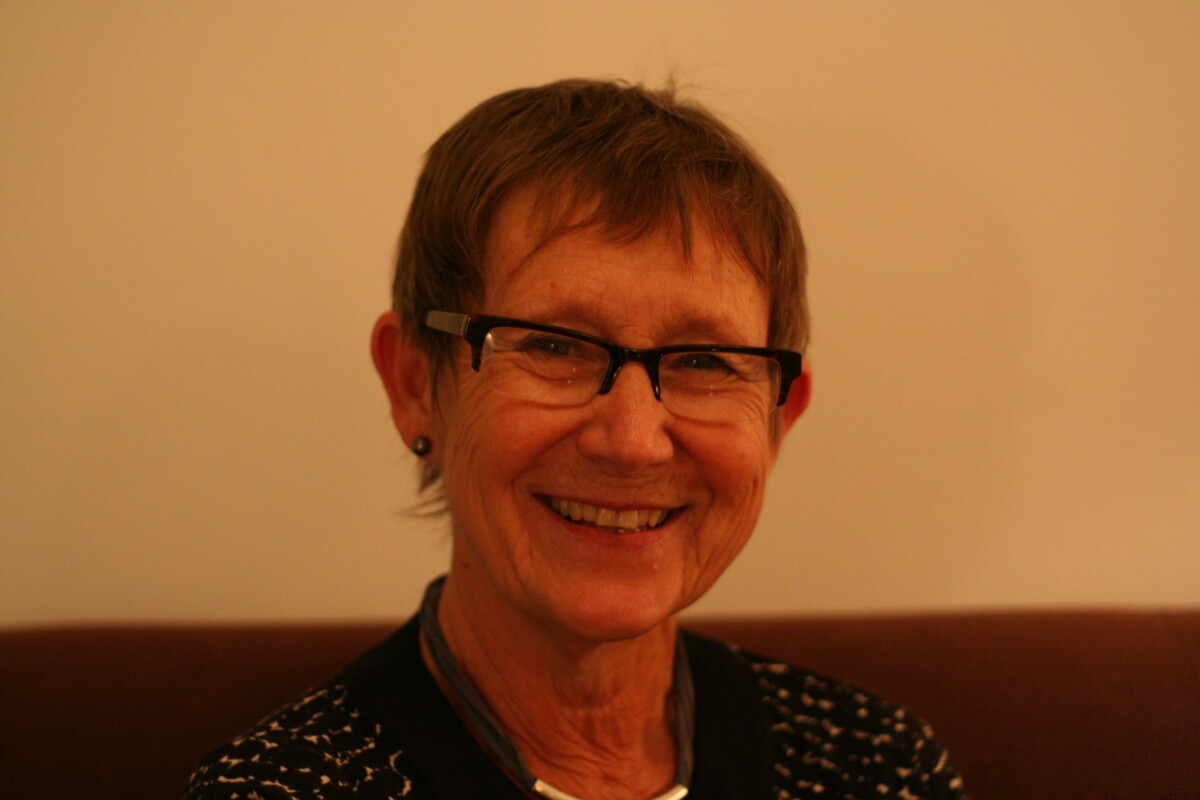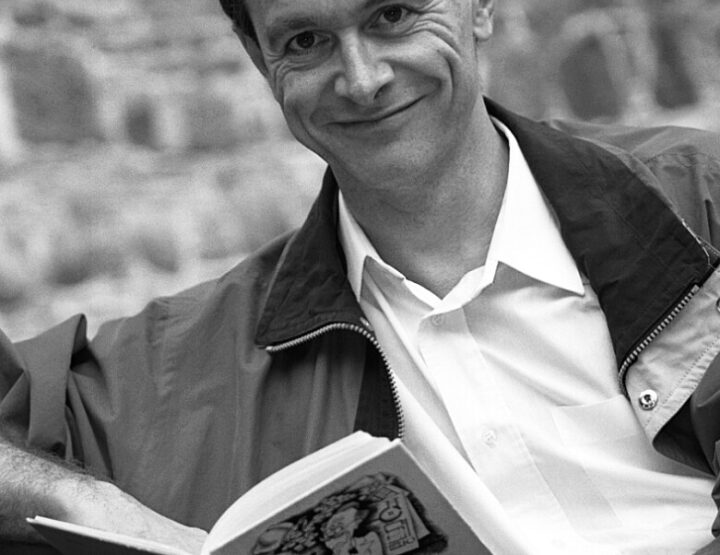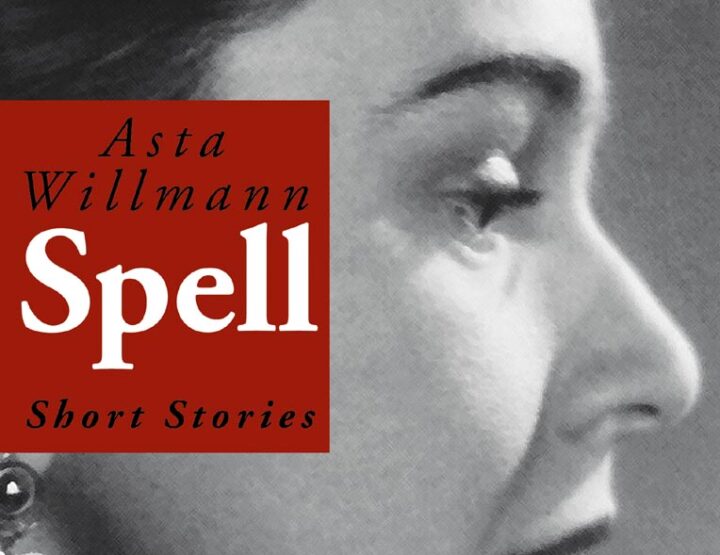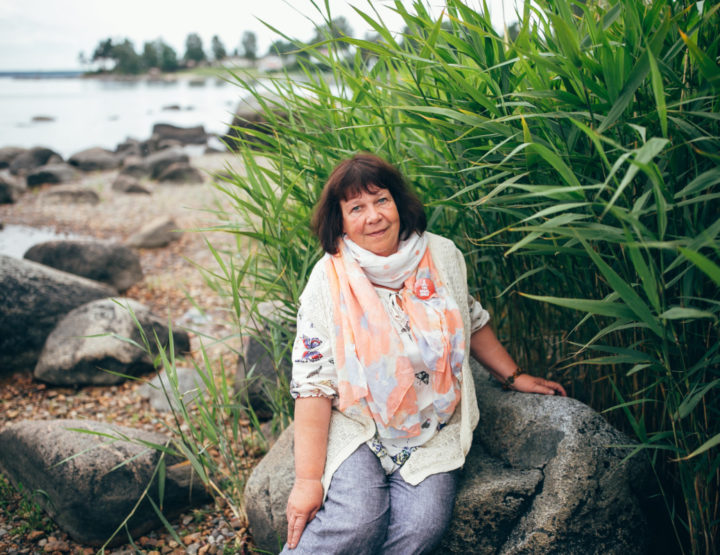At first I was a teacher, then teacher and writer, then only writer, then writer and translator and recently I have been only translator; for the book-fair in Gothenburg (in September 2007) 5 of the translations from Estonian were mine. But I hope to be writer again soon.
I translate from Estonian into Swedish, but I don’t write in Estonian, my writing language is Swedish. Estonian is my first language, my childhood language, my tongue for thirst, hunger and crying. When I cry, I cry in Estonian. Swedish is my intellectual tongue, my school-language.
My parents came to Sweden from Estonia in a new-built boat, 12 meters long that had never been in water, together with 36 other people in the September storms of 1944. I was the smallest person on board, I had just had my first birthday. From several fugitive camps and dwellings in the woods we moved to Gothenburg, where I went to school. After graduation I went to the University of Lund, where I took a BA in Philosophy, Literature, History of Religion and Drama- Theater – and Filmstudies. Later I landed in Stockholm, where I met my second husband, Arne, who is a professor in Literature and who finally took me to Oslo, where we have lived since 1990. My last 3 novels are published here, in Norwegian, but translated by a writer-colleague.
Two things made me a writer:
First I think it was the revolution that happened in my own life when I met my second husband, who is a Swede, and divorced my first husband, who was an Estonian, and from whom I had a son. Later we had a daughter and now we have three grandchildren.
All Estonians know the song Ema süda and I was brought up in the notion that a mother, especially an Estonian Mother, was the one person in the world who could never fail you. But in fact it was my mother who couldn’t cope with my divorce. My first novel, Modershjärtat (Mother’s Heart, 1977) deals with the problems related to my mother when I divorced my Estonian husband. This break with my family at first felt like freedom; now I was free to write and think what I wanted, I didn’t have to answer to anybody. I wrote the book in that vein and felt free to criticise the Estonian exile colony and write ruthlessly about my parents. But soon I realised that this freedom was a new exile. I was cast out from my relatives, my country, my people. This exile lasted about 13 years and ended when I renewed the contact with my parents. Now my mother is an eager reader of my books and a good help with my translations.
The second thing that made me start writing, was the new Women’s Liberation Movement in the 70s. Suddenly it was legitimate to write about oneself, even if one was a woman, and to bring forth female experiences. The Women’s Lib made me think about the “roles” we are made to play in the game between the sexes. And to think historically. I did not want to write a “confession”-novel though, as the label soon was put upon women’s novels. In fact I wanted to make these problems the results of time and history. So I invented a grandmother on father’s side, who was an Estonian peasant woman, what she in fact was, but whom I never met. And I gave her a language that I thought suited her, stuffed with old proverbs (found in a Swedish book of proverbs). Then I invented a grandmother on mother’s side and gave her an upbringing and youth in Petersburg and made her wait upon rich families and learn manners from them. Her chapter I gave a tone of old Russian 19th century novels. And finally I wrote about a modern Estonian woman in Sweden, in a language that was à la mode at the time, and placed her in the midst of conflicts; questions of identity, class, Estonian right-wing conservative views and norms in a world of youthful rebellion, flower-power and revolutionary ideas, new idols and utopias. I was swept away by a feeling of creating the world anew, which of course was supported by my being in love.
This book cost me a bad reputation in the Estonian exile colony and I know of people who wanted to give me a good spanking, naha peale, as it was said. But others, especially in the Swedish public applauded it and I got good reviews.
My next novels where written in dialogue with the Women’s Liberation Movement and dealt with different issues and questions. They also mirrored the development within the movement. Thus the next one, Medeas systrar, (The Sisters of Medea, 1978) dealt with jealousy and different strategies to cope with it, and at the same time it discussed radical feminism (women who shut out men from their lives) contra a more modest approach (women who tried to struggle along with men even if they were betrayed). And the modern stories of jealousy were put in relief to the ancient myth of Medea and Jason. The main question was: is there a difference between men’s and women’s jealousy?
Then there came a book, Nyckelpiga, flyg, (Ladybird, Fly, 1980) where I tried to lift forth the old traditions and values that women had created and held in an agrarian society, to bring in my own background, and I went back to a Finnish culture related to the Estonian and mixed it with a proletarian one in Gothenburg in the 50s.
The daughter of Linda, the main character in this book, became the main person in the next: Månbrunnen (The Moon-well, 1981). Lill is a lesbian, she has “disappeared” and fled to a summerhouse for a week of fast and contemplation, her lover Marian and Rita, a writer who knows them both, are searching for her. Lill’s diary is found and at last they rejoin at Lesbos, dancing in the water like goddesses; like Artemis or Lilith (Lill), Aphrodite (Marian) and Pallas Athena (Rita).
Namn ristat i vatten (Name Wrought in Water, 1988) is about a saint from the 7th century whom I found in the cathedral of Ely in East Anglia where her remains are preserved, intact as it is said. Three men in a boat (a canal-boat) have also found her there, two of them, a translator and a writer correspond about a manuscript found about Saint Etheldreda and try to find out about her story. They find different stories, an intertextual web, but the woman herself flows away like water in their hands.
Kärlekens arkeologi (The Archaeology of Love, 1990) has two stories running: one is called Vargavinter (Woolf’s Winter) and the other Kärlekens arkeologi. The first one goes back to Estonian myths and people who fled to Sweden during the war, the other is about a couple who find each other in Crete, the man is an archaeologist. Both stories are also about nostalgia; longing for a lost homeland and longing back to a mythical time, the Garden of Eden, where everything was bliss and happiness, as in the first moments of falling in love.
Den elfte dagen (The Eleventh Day, 1992, translated into Estonian: Üheteistkümnes päev 1998 and German: Der elfte Tag 1993) is a sort of Decameron. Seven female writers meet in a Sanatorium above the clouds, beyond time and space, and tell stories to each other, but they also have some small conflicts and play charades. The authors are Virginia Woolf, Vita Sackville-West, The Brontë sisters, Karen Blixen (Isak Dinesen) and the Swedish author Victoria Benedictsson and I regard them with irony and love as my literary mothers.
My last 3 novels have appeared in Norway:
Dyret som ikke finnes (The Animal That Doesn’t Exist, 1997) is about the Unicorn in both literature and visual arts. The novel is woven like a tapestry based on the two known series; The lady with the Unicorn at the Cluny museum in Paris and The Unicorn hunt at the Cloisters in New York. The different medieval stories are held together by a man and a woman who both are doing research on the motive. This book is now published also in Sweden.
Herr Brecht og hans kvinner (Mr. Brecht and His Women, 1999) has four chapters, one for each woman from the period when Bertold Brecht went in exile together with his wife Helene Weigel, his mistress-secretary Margarete Steffin and his mistress and promoter Ruth Berlau. They all came to Finland and stayed with the Finnish-Estonian writer Hella Wuolijoki at her manor, where the play Mr. Puntila and his Servant Matti was written, based on a play by Wuolijoki.
I tid og evighet. En operaroman (For Ever. An opera-novel, 2001) is about 3 operas and the same figure in three ages, Rosina 16, in The Barber of Seville, Rosina 20 something in The marriage of Figaro and the Marshallin who is feeling that age is creeping upon her in the Rosenkavalier. It is at the same time a history of opera, since the figure has existed about 200 years. These two novels will also be published in Sweden.
I have written 3 books for children: one with Greek mythology, one with Celtic. The third book is about youth abortion.
As you may have noticed, all my novels are written in different levels and with different stories intertwined, often in different styles and languages and pastiches. I think I was ‘post-modern’ before I knew the term. I also think that it could depend on my lack of a language that I can call my own. To write in between genres adds to my feeling of being an exile. They never can place me.
As a mediator between my two languages, my Estonian mother tongue and my Swedish writing language, I have translated a couple of books: 12 for now, and I am contracted to do another translation for next year. I feel that I have done some amends for the sins I may have committed with my first novel and that in a way I have found a bridge back to my native country by my translations. A kind of return.
© ELM no 26, spring 2008





